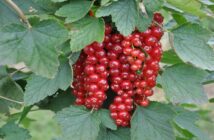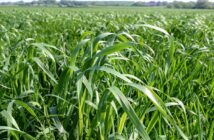Wheat growers should take full advantage of the golden opportunity they have to control black-grass, brome and ryegrass ahead of drilling this autumn, stresses Monsanto technical specialist, Barrie Hunt.
“Warm, wet soils are ensuring rapid grassweed germination and emergence in stubbles regardless of apparent dormancy status,” he pointed out. “This gives us just the opportunity we need to stay firmly on top of them by employing all the cultural control weapons at our disposal in thoroughly integrated way.
“Because we can’t rely on in-crop herbicides like we used to, the period between the harvesting of the last crop and the emergence of the next has become the single most important of our grassweed management year.
“Getting things right at this stage can easily be the difference between profit and loss wherever grassweeds are a problem. So it’s vital we put as much care and attention into what has traditionally been seen as a welcome agronomic respite as we do to the growing crop. Especially when the out-of-crop control opportunities are as good as they are this autumn.”
The key priorities in this respect in Barrie Hunt’s extensive experience are two-fold – minimising the number of grassweeds that emerge within the wheat while maximising its ability to out-compete those that do. This puts the onus on the most appropriate cultivation, pre-planting control, drilling and pre-emergence herbicide strategies.
“The best balance of rotational ploughing and reduced tillage is essential here,” he insisted.
“We know that burying grassweed seeds below the depth from which they can emerge is a good way of reducing the viable weed seed bank. But we also know that we need complete and consistent inversion to really do the job. Which means taking the time and care to get our ploughing right.
“At the same time, we need to avoid repeated deep cultivation as this will only bring viable weed seed buried the previous season back to the surface. Research shows us that the best balance in most grassweed situations is ploughing every 4-5 years, with shallow cultivation in between to concentrate the remainder of weed seed bank near the soil surface where we can control it with stale seedbeds and pre-planting glyphosate.”
Even where conditions are ideal for early weed seed emergence, wherever grassweeds are problematic Barrie Hunt is adamant that wheat drilling must be delayed – until October at the earliest, and preferably mid-October. As well as giving more time for the most effective pre-planting control he explains that drilling at this time will be beyond the peak of normal autumn grassweed emergence. It will also extend the activity of residual herbicides.
“Whether you cultivate only once and spray-off all the weed growth immediately prior to drilling or kill one flush of weeds then set up a second stale seedbed to stimulate another flush for a further round of pre-planting control, it’s important to make the most of glyphosate treatment,” he said.
“Glyphosate is probably the single most valuable grassweed control weapon we still have these days. So it needs to be used right – both to maximise its efficacy and to guard against the risk of resistance development. Don’t rush the job because ‘it’s just stubbles’. Take care and do it properly because this is one of the best opportunities of the whole year to deal with grassweeds.”
In particular, Barrie Hunt identifies three key considerations:
- Using the right rate of a modern, high-performance Roundup formulation, being aware that dose rates, efficacy and labels vary widely between different glyphosates;
- Maintaining active ingredient rates when adding adjuvants, as they are unable to make up for insufficient glyphosate in most situations; and,
- Spraying in the most effective way, employing the right water volumes, the correct nozzles, correct pressure, appropriate speed and the best application practice.
“As well as being performance-proven under challenging conditions, modern Roundups are rainfast in just an hour and have a 6-hour cultivation interval for annual grass weeds for the greatest operational flexibility,” he noted.
“Unlike many glyphosates, they also have label approval for multiple stubble applications as well as subsequent use for post-planting, pre-em application to deal with any weeds already emerged in the seedbed. This is particularly useful where drilling has to be delayed more than a few days after the final pre-planting spray.”
To further minimise grassweed emergence in the seedbed, Barrie Hunt recommends moving the least possible soil at drilling.
He also advises planting the most competitive wheat varieties at higher seed rates to put the greatest pressure on any weeds that do emerge. And achieving the best, well-consolidated seedbeds both to encourage the most vigorous early crop growth and for the most effective post-emergence herbicide activity.
“Grassweeds have an uncanny ability to exploit any loopholes we leave them,” concluded Barrie Hunt. “That’s why we need to use as many cultural tools as we can in a well-integrated way to stay on top of them and make the very most of golden control opportunities like this autumn to really press home our advantage.
“Our on-line Grassweed Action resource (www.monsanto-ag.co.uk/grassweed-action) gives the best available guidance on doing this for bromes, ryegrass, wild oats and couch as well as black-grass.”




